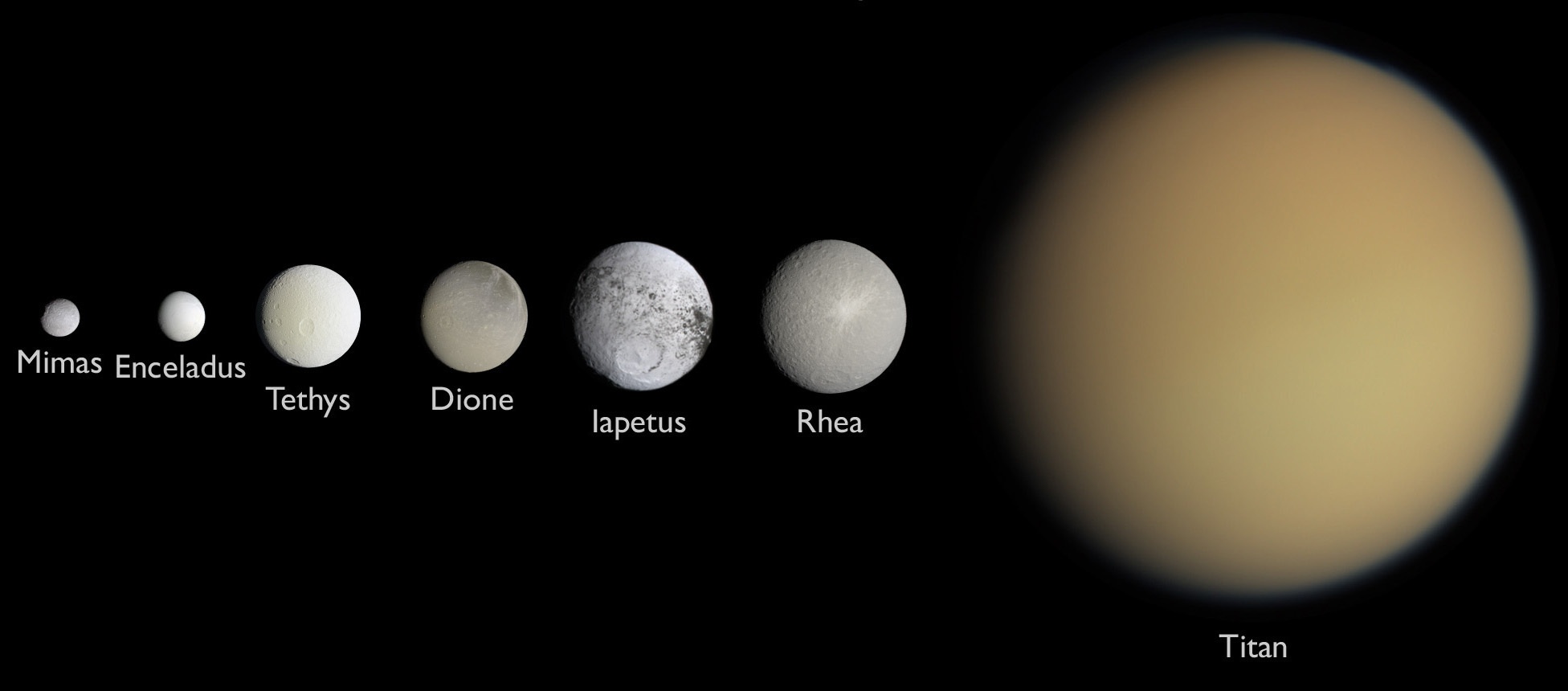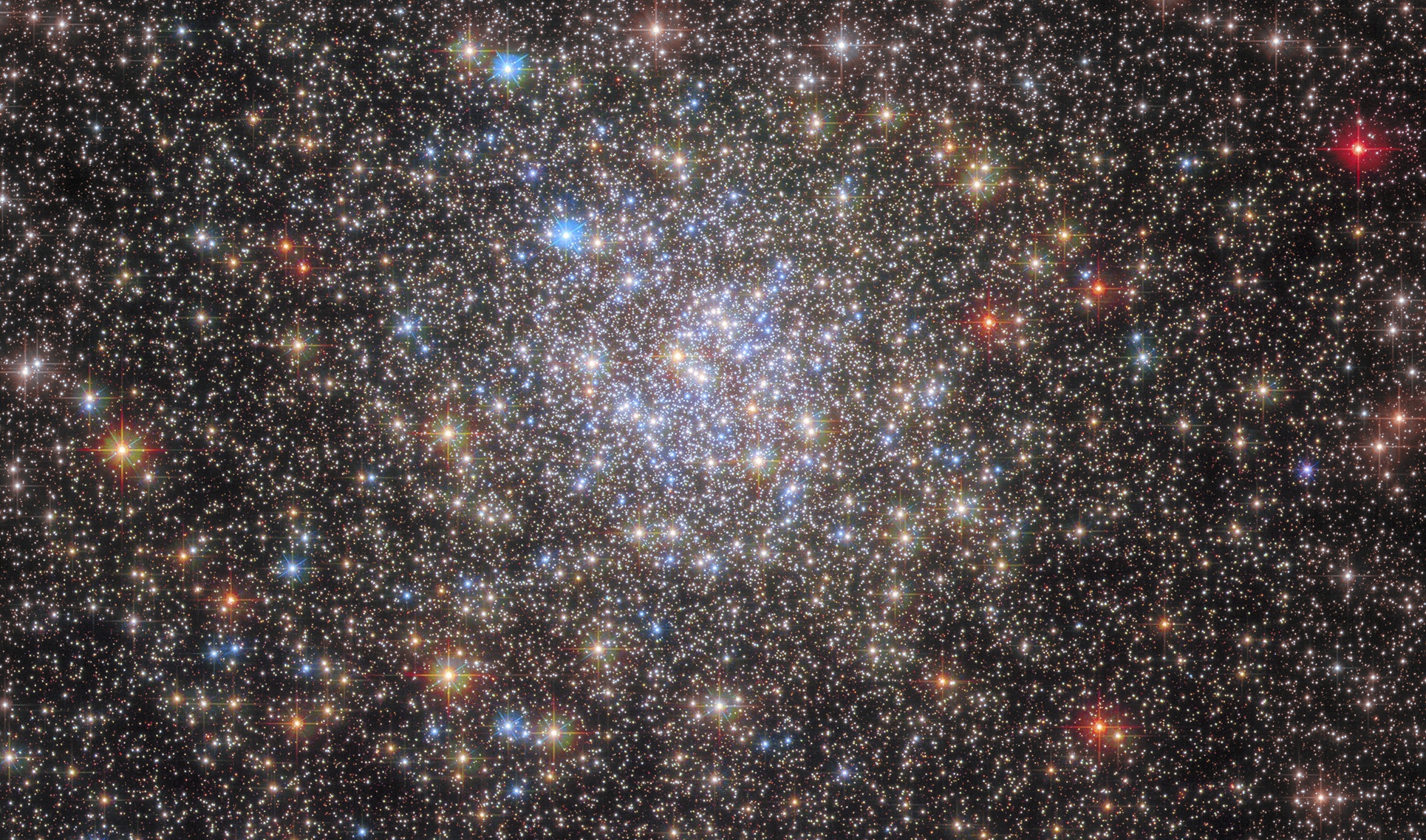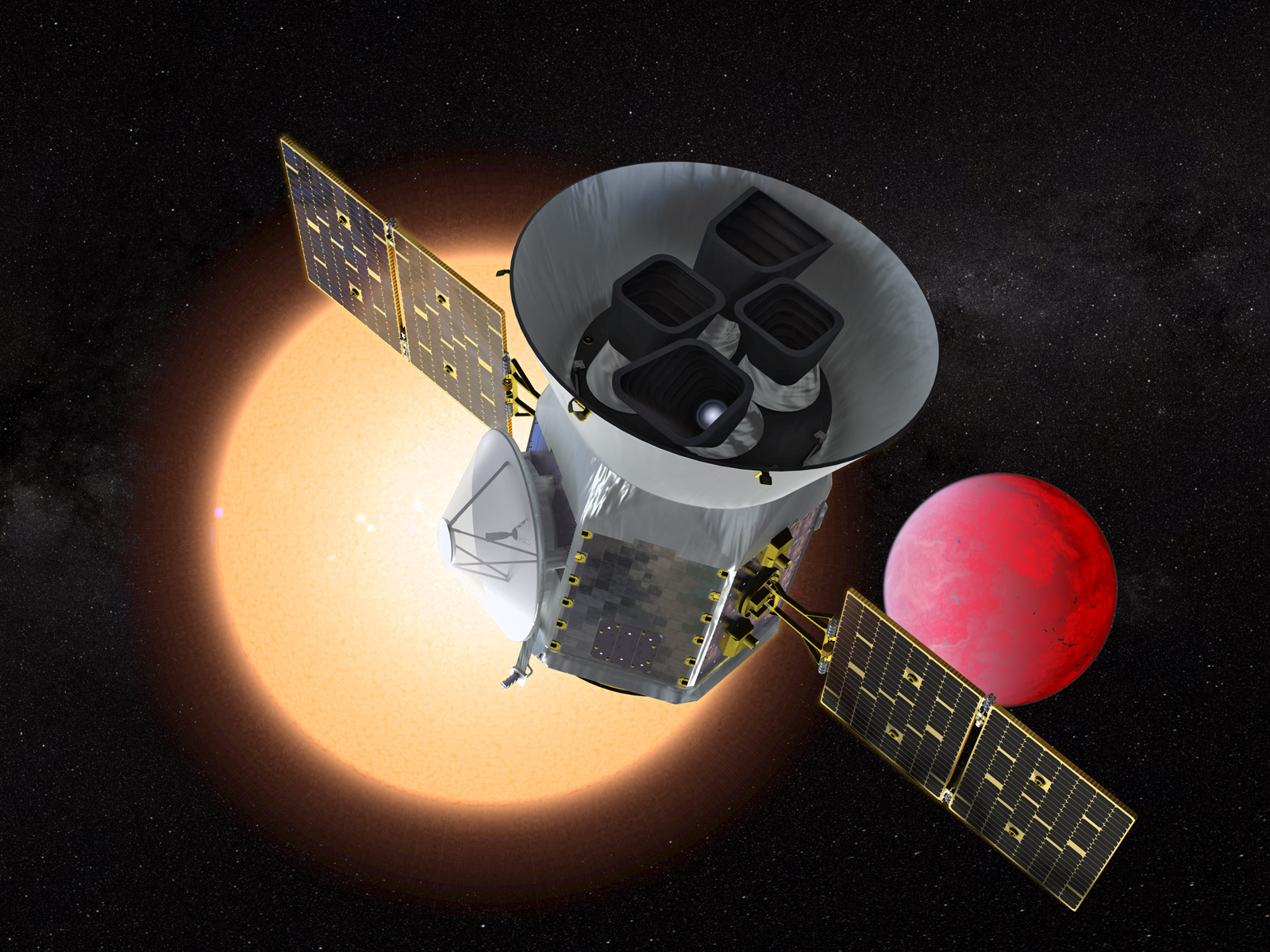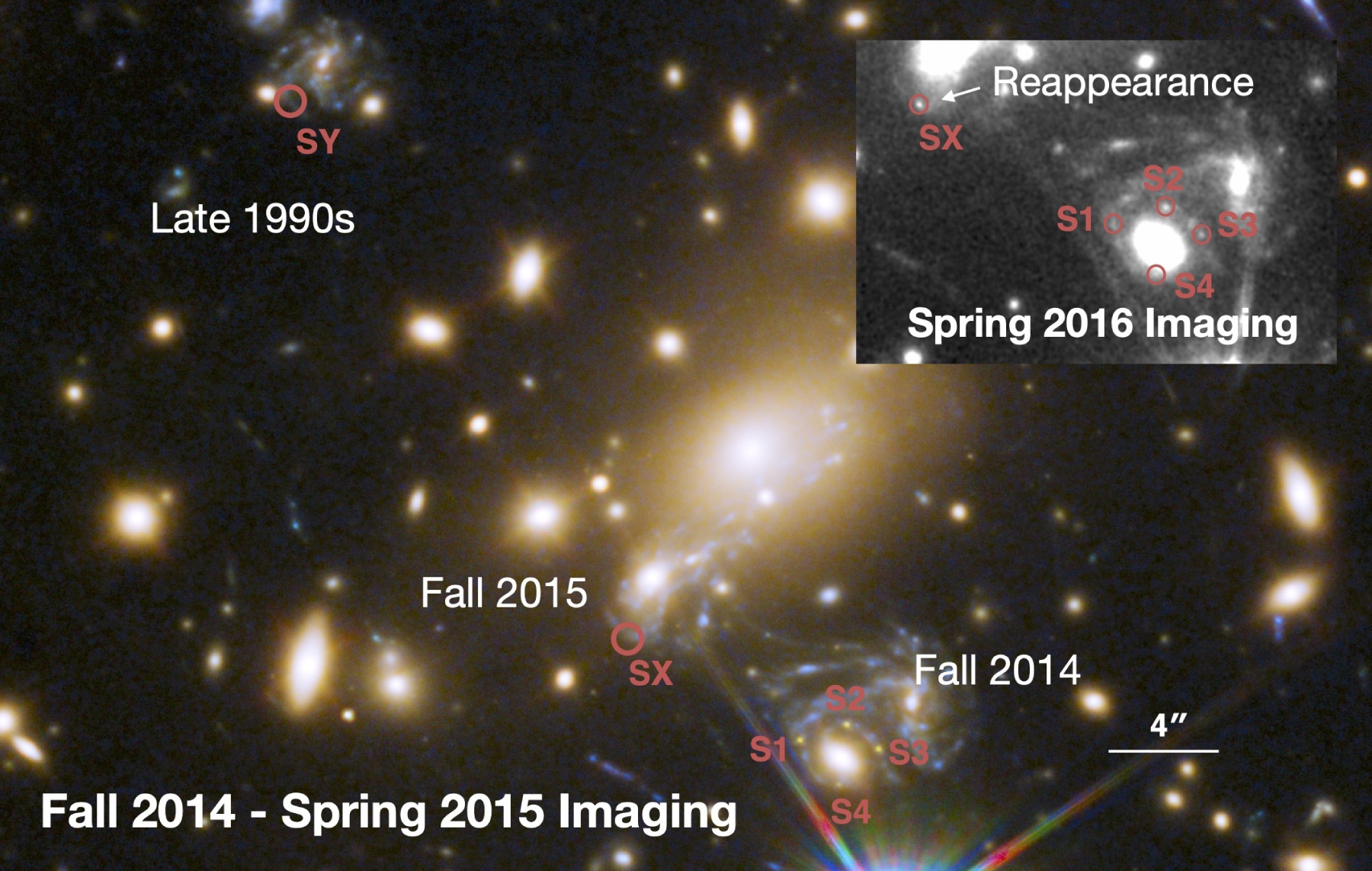The Pinwheel Galaxy, also known as M101, is a spiral galaxy just 21 million light years away. It’s a popular galaxy for photographs because it’s oriented to us face-on. This means you can see the bright whorled spirals and dark cloud regions, even in amateur photographs. Since it’s relatively close and bright, you can get a good view of it, even with a small telescope. It also happens to have a supernova at the moment.
Continue reading “There's a New Supernova in a Familiar Galaxy. You Can See it in a Small Telescope”One Spacecraft Could Visit All of Saturn's Inner Large Moons

If you’ve ever played Kerbal Space Program, you know how difficult it can be to get your spacecraft into the orbit you want. It’s even more difficult in real life. This is why it’s pretty impressive to see a proposal to study all of Saturn’s large inner moons in one go.
Continue reading “One Spacecraft Could Visit All of Saturn's Inner Large Moons”When Black Holes Merge, They'll Ring Like a Bell

When two black holes collide, they don’t smash into each other the way two stars might. A black hole is an intensely curved region of space that can be described by only its mass, rotation, and electric charge, so two black holes release violent gravitational ripples as merge into a single black hole. The new black hole continues to emit gravitational waves until it settles down into a simple rotating black hole. That settling down period is known as the ring down, and its pattern holds clues to some of the deepest mysteries of gravitational physics.
Continue reading “When Black Holes Merge, They'll Ring Like a Bell”There's So Much Going on in This Star-Forming Nebula

There are some astronomical images that capture rapturous beauty, with their brilliant colors and interplay of shadow and light. A beautiful image can be enough to stir the soul, but in astronomy they often also have a story to tell. An example of this can be seen in a recent image released by NSF’s NOIRLab.
Continue reading “There's So Much Going on in This Star-Forming Nebula”Not All Type 1a Supernovae are Created Equally

Supernovae are brilliant explosions that can, for a time, outshine an entire galaxy. They come in two broad types: Type I and Type II. Type II supernovae are what are known as core-collapse supernovae. They occur when a massive dying star fuses ever heavier elements in its core until it runs out of energy options and its core collapses under its own weight, which triggers the explosion. Type I supernovae occur when…well, it’s complicated. But we’re learning more thanks to a new observation by radio astronomers.
Continue reading “Not All Type 1a Supernovae are Created Equally”Astronomers Want to Build the Next Generation Arecibo Telescope

The Arecibo Telescope was an amazing tool for astronomers. Built in the early 1960s, it had a 1,000-foot-wide dish and was capable of both receiving and transmitting radio signals. It did radar mapping of near-Earth asteroids, Venus, and the Moon, discovered water at the polar regions of Mercury, searched for alien civilizations, and even send a radio message from Earth to a globular cluster 25,000 light years away. So when it collapsed in 2020, many astronomers wondered if it could be rebuilt.
Continue reading “Astronomers Want to Build the Next Generation Arecibo Telescope”Saturn's Rings are Much Younger Than the Planet
The rings of Saturn are an amazing sight. They are so iconic that it is hard to imagine Saturn without its rings. But throughout most of Saturn’s history, it didn’t have rings. The rings are much younger than the planet itself, and we now have good evidence to prove it.
Continue reading “Saturn's Rings are Much Younger Than the Planet”Astronomers Have a New Way to Measure the Expansion of the Universe
The cosmos is expanding at an ever-increasing rate. This cosmic acceleration is caused by dark energy, and it is a central aspect of the evolution of our universe. The rate of cosmic expansion can be expressed by a cosmological constant, commonly known as the Hubble constant, or Hubble parameter. But while astronomers generally agree this Hubble parameter exists, there is some disagreement as to its value.
Continue reading “Astronomers Have a New Way to Measure the Expansion of the Universe”New Clues to the Formation of Globular Clusters: Their Ultramassive Stars

Globular clusters are odd beasts. They aren’t galaxies, but like galaxies, they are a gravitationally bound collection of stars. They can contain millions of stars densely packed together, and they are old. Really old. They likely formed when the universe was only about 400 million years old. But the details of their origins are still unclear.
Continue reading “New Clues to the Formation of Globular Clusters: Their Ultramassive Stars”Two Super-Earths Found Orbiting a Red Dwarf Star at the Edge of the Habitable Zone

NASA’s Transiting Exoplanet Survey Satellite, or TESS, was designed to find other worlds. Following in the tradition of the Kepler spacecraft, TESS has a hundred thousand stars looking for small but regular dips in their brightness. These dips are typically caused by planets as they pass in front of the star. TESS has been quite effective, logging nearly 6,000 candidate exoplanets. Confirming or rejecting these candidates takes time, but it has led to some interesting discoveries.
Continue reading “Two Super-Earths Found Orbiting a Red Dwarf Star at the Edge of the Habitable Zone”


